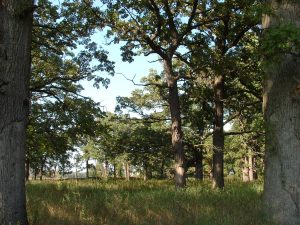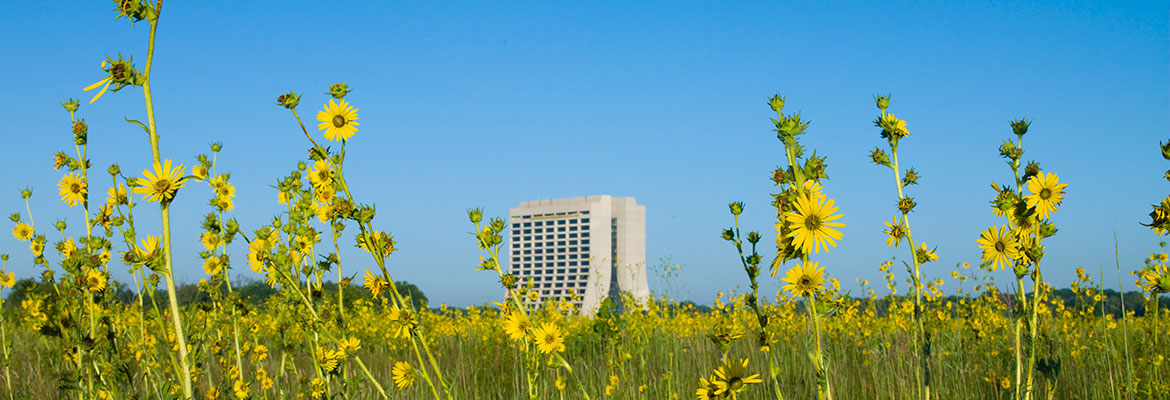Less than 2% of oak savanna communities remain intact in the Midwest though efforts to restore this distinct ecosystem have been expanding.

Fermilab has three distinct oak savannas on site: Main Ring Savanna, Bison Savanna, and Site 29 Woods West, all of which are being restored. Photo credit: R. Campbell
The oak savanna community type is dominated by large-diameter trees, primarily bur and white oak (Quercus macrocarpa and Q. alba, respectively). These trees are widely spaced and create only 10-50% canopy cover. This mosaic of sun and shade creates an environment where prairie and forest plants can grow together amongst a suite of unique species designated as savanna plants. A savanna may have shrubby areas and has soils that are transitional between forest and prairie. Less than 2% of savanna communities remain intact in the Midwest though efforts to restore this distinct ecosystem have been expanding. Oak savannas are critically imperiled systems globally.
Fermilab has three distinct oak savannas on site, yet there is evidence that many of the current woodland parcels were open-grown savannas prior to European settlement (observation, 1939 aerial photographs, and original Land Surveyor notes). This is most apparent in several wet woodlands harboring relict swamp white oak (Quercus bicolor) and bur oak (Q. macrocarpa) canopy trees. Floristic quality index in oak savannas at Fermilab ranges from 46 to 66. Invasive plant species affecting oak savannas include buckthorn (Rhamnus cathartica), honeysuckle (Lonicera mackii), ornamental bittersweet (Celastrus orbiculatus), reed canary grass (Phalaris arundinacea), crown vetch (Securigera varia), and smooth brome (Bromus inermis). Prescribed fires are carried out every 2-3 years to maintain oak savanna communities.

